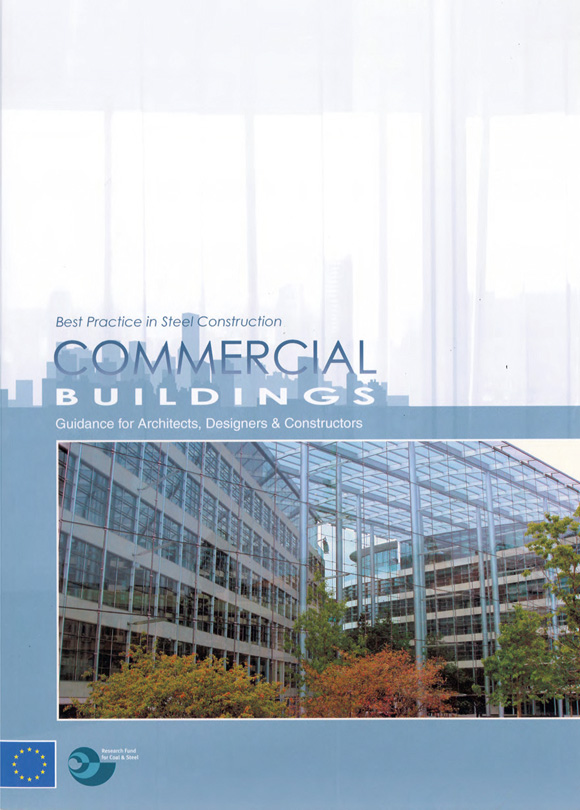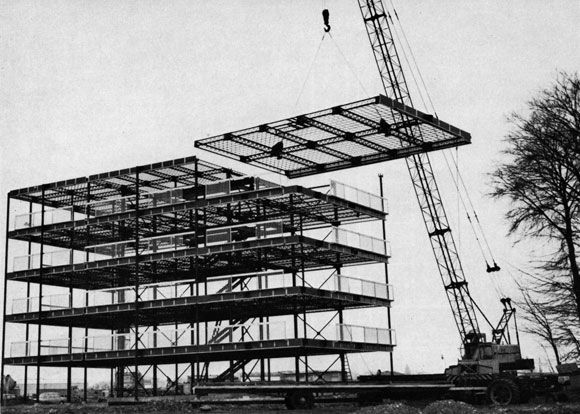News
Letters: June 2005
NSC welcomes letters from readers on steel construction related issues. Please keep your letters brief — the Editor reserves the right to condense.
Safety designed in
Peter Walker’s observations on the upcoming changes to the CDM regulations in NSC’s May edition once again brings the whole subject of CDM and our respective roles as designers back into the spotlight. The new regulations will further emphasise the designer’s role, a role that still, despite all the recent HSE initiatives, very few of us fully appreciate. I have been particularly interested in the whole aspect of the role of a designer under CDM, and whereas I too as a steelwork contractor was dismissive of our ability to affect site safety by design, the more I have considered the issue the more I firmly believe we can actually influence.
Such aspects include holes for edge protection being incorporated at fabrication stage, erecting the edge protection at ground level and lifting with the steelwork, the use of lifting cleats and proprietary shackles, limiting working at height, real consideration of temporary stability issues the list is endless. My one fear is yet again the changes to the regulations will produce an even greater plethora of paper and plunge what could be a real opportunity to improve site safety into a further tick the box exercise that blights the current regulations.
Steve Fareham
Managing Director
Billington Structures
Steel ideal for housebuilding
I read your report on the contribution that steel can make towards meeting the government’s challenging housebuilding targets in your May issue with interest.
The challenge facing the housing construction industry is clear: increase output from 21,000 to 35,600 units per year and at the same time reduce the energy footprint of housing by 60%. Where is this increase in output to come from? Do we continue to drive up effieiency in the current industry? Do we import a workforce from abroad? Do we import houses, lock stock and barrel, from abroad? All of the above are possible, but there is another option: we can create a house manufacturing industry to fulfil the demand; not manufacturing homes based on the experience of our housebuilders, but one based on a different premise, fulfilling the desire of each buyer to own their own tailor-made dream home.
Modern manufacturing can make a batch of one: instead of mass-production we can have mass-customisation. Instead of everyone’s home being the same as
their neighbour, they can all be unique.
Where does steel fit in? It is the ideal manufacturing material, you can bend it, cut it, pierce it, curve it in two dimensions and it retains its integrity; you can use it to hold a building up, to protect the roof and to clad it: the possibilities are almost endless. Just imagine, if you will, a row of semis clad in weathering steel, a street of townhouses resembling something from the Mercedes factory and a tower like the Swiss Re but full of apartments. Yes, we have made progress, but there is a world of opportunity waiting.
Rory Bergin
Director IT
HTA Architects Ltd, London
Pay when payment is due
I fully endorse Marion Rich’s comments on the Construction Act in your May issue. Continuing payment difficulties in the industry prompted the review of the Act. Payment delays and abuse are endemic in the industry because everybody is living off everybody else’s credit. As one moves along the supply chain the credit periods get longer and longer, with the smaller companies bearing a disproportionate burden of the financing.
This state of affairs has its price. If everybody were paid on time and without credit being given, the industry could save almost £2,000M a year. This figure is based upon the savings made on a recent Defence Estates project at the Faslane submarine base. The project was worth £90M and the savings were almost £2M as a result of everybody being paid on time.
There are two key messages for the government. The first is that we must have certainty of the time and the amount of payment to be made. This means that we must include within the Construction Act a very simple payment procedure that gives rise to an enforceable debt, which gives a statutory right to apply for payment. The second message is that we must have security of payment. This includes starting the payment process from the date of the agreement to commence offsite activity such as steel fabrication, getting rid of pay when paid, and providing protection against insolvencies.
It is now vital that we respond to the consultation documentation and make our views known.
Professor Rudi Klein
Chief Executive
Specialist Engineering Contractors Group












